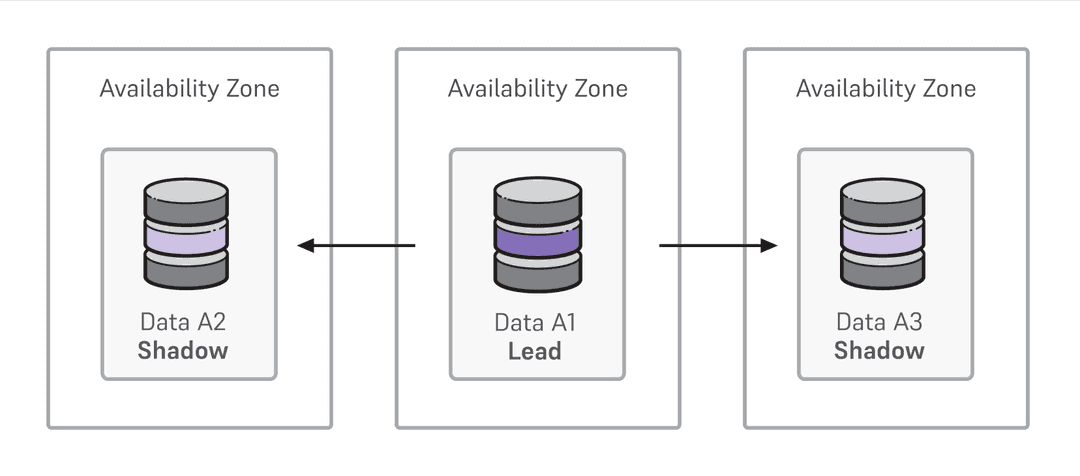Primary/standby high availability
The Primary/Standby High Availability option is provided to minimize downtime in cases of failures. Primary/standby high-availability clusters—one primary and one or two standby replicas—are configured automatically. Standby replicas stay up to date through physical streaming replication.
If read-only workloads are enabled, then standby replicas serve the read-only workloads. In a two-node cluster, the single standby replica serves read-only workloads. In a three-node cluster, both standby replicas serve read-only workloads. The connections are made to the two standby replicas randomly and on a per-connection basis.
In cloud regions with availability zones, clusters are provisioned across zones to provide fault tolerance in the face of a data center failure.
In case of temporary or permanent unavailability of the primary, a standby replica becomes the primary.

Incoming client connections are always routed to the current primary. In case of failure of the primary, a standby replica is promoted to primary, and new connections are routed to the new primary. When the old primary recovers, it rejoins the cluster as a standby replica.
Standby replicas
By default, replication is synchronous to one standby replica and asynchronous to the other. That is, one standby replica must confirm that a transaction record was written to disk before the client receives acknowledgment of a successful commit.
In a cluster with one primary and one replica (a two-node primary/standby high-availability cluster), you run the risk of the cluster being unavailable for writes because it doesn't have the same level of reliability as a three-node cluster. BigAnimal disables synchronous replication during maintenance operations of a two-node cluster to ensure write availability. You can also change from the default synchronous replication for a two-node cluster to asynchronous replication on a per-session or per-transaction basis.
In PostgreSQL terms, synchronous_commit is set to on, and synchronous_standby_names is set to ANY 1 (replica-1, replica-2). You can modify this behavior on a per-transaction, per-session, per-user, or per-database basis using SET or ALTER commands.
To ensure write availability, BigAnimal disables synchronous replication during maintenance operations of a two-node cluster.
Since BigAnimal replicates to only one node synchronously, some standby replicas in three-node clusters might experience replication lag. Also, if you override the BigAnimal synchronous replication configuration, then the standby replicas are inconsistent.
- On this page
- Standby replicas